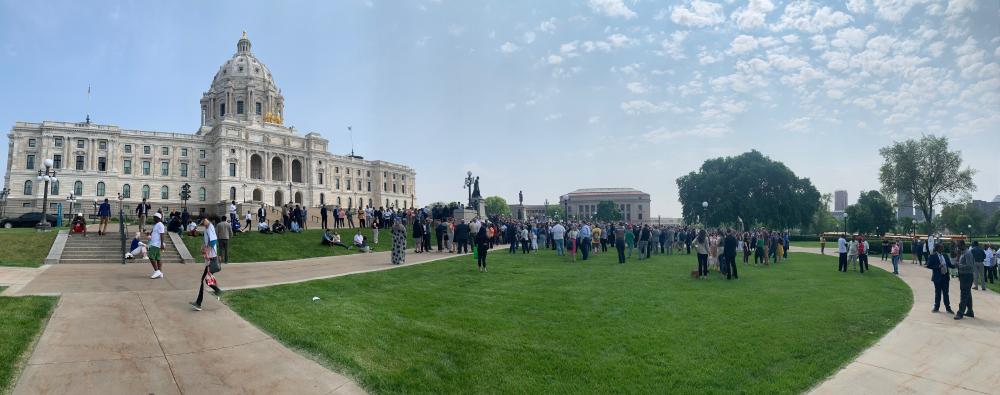
What Was Gained for Hunger-Relief During the 2023 Legislative Session
The 2023 legislative session officially ended on Monday, May 22, and shortly thereafter Minnesota Governor Tim Walz signed a series of bills that together comprise a nearly $72 billion state budget.
The Second Harvest Heartland Public Affairs team went into this session with high hopes, given the unprecedented budget surplus of nearly $18 billion, plus clear interest from lawmakers to invest in basic needs like food security, housing and health care. We saw some early wins when the legislature passed universal school meals and emergency food shelf funding back in March, and the final days of session brought about dozens more policy changes and new programs that will make a huge difference to our organization’s work and to the people we serve.
Not only does this budget invest in numerous organizations and programs working in the emergency food system, but its biggest impact will be felt in how it addresses hunger's root causes—an approach that is reflective of larger transformations in the way in which we as the food banking community think about our anti-hunger advocacy. Hunger doesn’t exist in a vacuum, so historic investments in affordable housing, healthcare and transit, guaranteed paid leave, a new state-funded child tax credit, free college tuition and more will help ensure fewer Minnesotans go hungry in the years to come.
Below, we’ve highlighted a few of the policies and programs we’re most excited about because we know they will help put food on the table for more Minnesota families.
FOOD SECURITY
- $3.3 million to launch a prepared meals grant program that will help expand programs like Kitchen Coalition.
- $1.95 million per year for the Farm to Food Shelf program, which helps food banks source locally produced or processed produce, protein and milk.
- $3 million per year for the Minnesota Food Shelf Program, doubling previous state support. Program funds can now also be used to buy personal hygiene products like toilet paper and diapers.
- $300k per year for The Good Acre’s LEAFF program, which provides locally grown produce from small farmers and farmers of color to the hunger-relief network.
OTHER BASIC NEEDS
- $1.52 billion to create a permanent state Child Tax Credit (CTC), which will provide eligible families $1,750 per dependent and is estimated to benefit around 256,000 Minnesota families. Much like the federally expanded CTC during the pandemic, Minnesota's CTC is expected to reduce child poverty by a third and narrow disparities by income, race and geography.
- $260 rebate checks for Minnesotans earning up to $75k per year, or households with a combined income of $150k per year or less. Checks will be distributed to an estimated 2.58 million people.
- $1 billion to create and support more affordable housing options, nearly $100 million for emergency shelter facilities, and an expanded Minnesota Renter's Credit.
- The commerce budget caps the price of prescription drugs that treat chronic diseases like diabetes and asthma at $25 and the health and human services budget allows around 40,000 undocumented immigrants to enroll in low-cost health insurance through MinnesotaCare.
We look forward to working with the Walz administration and legislative leaders ahead of next year’s session to develop and build support for policies to ensure that the people we serve are able to fully access the resources they need to thrive. Meanwhile, Second Harvest Heartland is ready to work with Governor Walz and Minnesota’s state agency officials on implementing the hunger-relief components of this historic budget.
Feeling inspired by this long list of policy wins to fight hunger in Minnesota? Here are a few ways you can keep the good vibes going:
- Share food resources with a senior or kiddo in your life. Second Harvest Heartland helps Minnesota seniors with free boxes of healthy, shelf-stable foods, with SNAP enrollment, and more. Or, read up on our campaign with KARE11 to ensure that kids have access to meals this summer and beyond, so they are free to have fun.
- Advocate for the policies and programs that will bring meaningful solutions. Join our advocacy list for the latest updates.
- Volunteer to fight hunger in your local community, be it here at Second Harvest Heartland or at your neighborhood service organization or food shelf.
- Donate financially to causes addressing barriers and inequities, including our work of ending hunger together.
